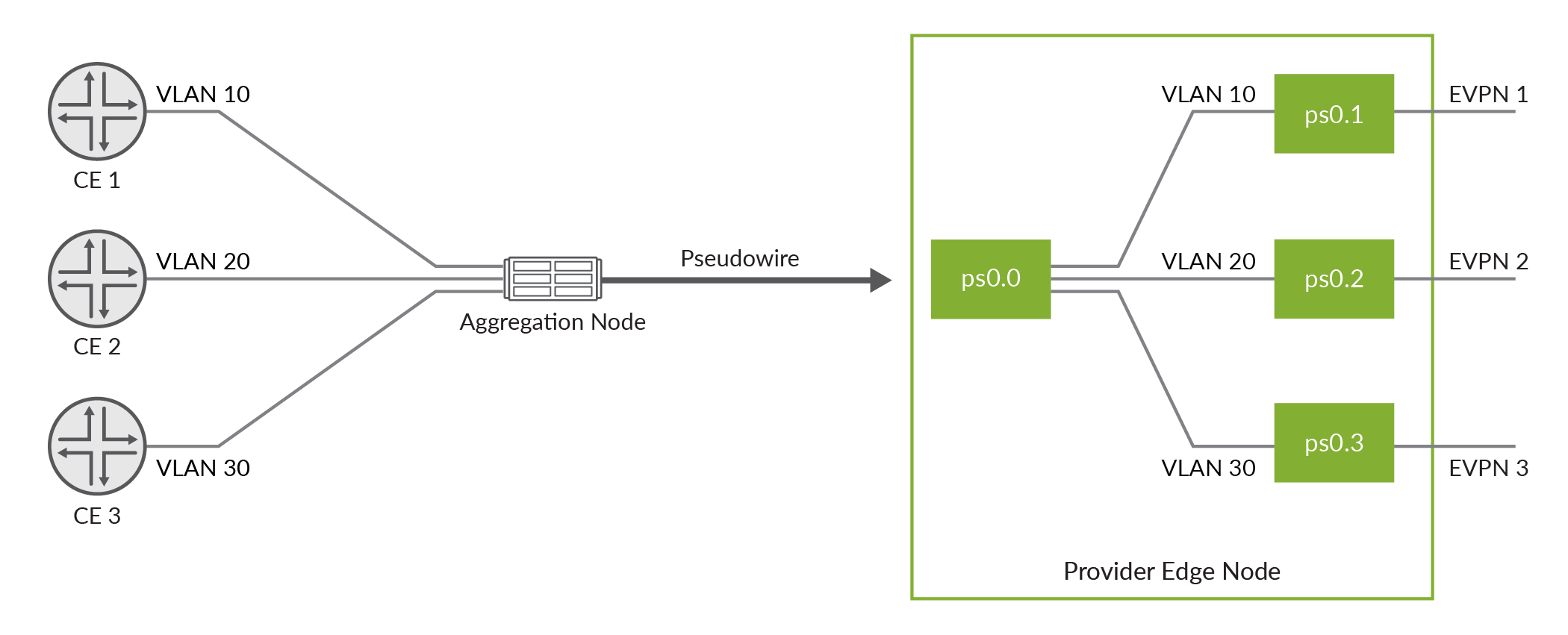Overview of Pseudowire Termination at an EVPN
Pseudowires provide point-to-point service over an MPLS or Layer 2 circuit. They enable providers to extend their Layer 2 networks. A pseudowire tunnel terminates on a logical interface on the PE router with the transport logical interface configured for interoperability with the access or aggregation device on the other end of the pseudowire tunnel. It is identified as psn.0 and supports both port-based and VLAN-based encapsulation over pseudowire. The corresponding service logical interfaces are identified as psn.1 to psn.n and are configured to support EVPN in the EVPN routing instance.
Figure 1 shows a port-based pseudowire tunnel that originates on an aggregation node carrying VLAN traffic from several CE devices. The pseudowire terminates in a transport logical interface (ps0.0) on a single-homed PE router, where the VLAN traffic is demultiplexed into different service logical interfaces(ps0.1, ps0.2, and ps0.3) along with their corresponding EVPN routing instances.

Benefits of Pseudowire Termination at an EVPN
-
Resiliency—When a redundant logical tunnel is configured on a separate FPC, connectivity for the pseudowire automatically switches to another FPC.
-
Reduced cost—Rather than using additional devices to terminate a pseudowire tunnels, you can configure pseudowire termination on the same device that also supports EVPN.
Support for Junos Node Slicing
Pseudowire termination is supported on multiple partitions in a single MX Series. Using Junos Node Slicing, you can create multiple partitions on a single MX router. These partitions are referred to as a guest network functions (GNFs). For more information on Junos Node slicing, see Junos Node Slicing User Guide.
